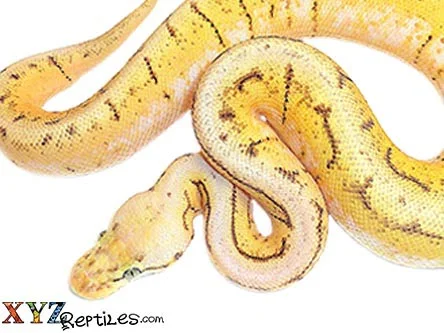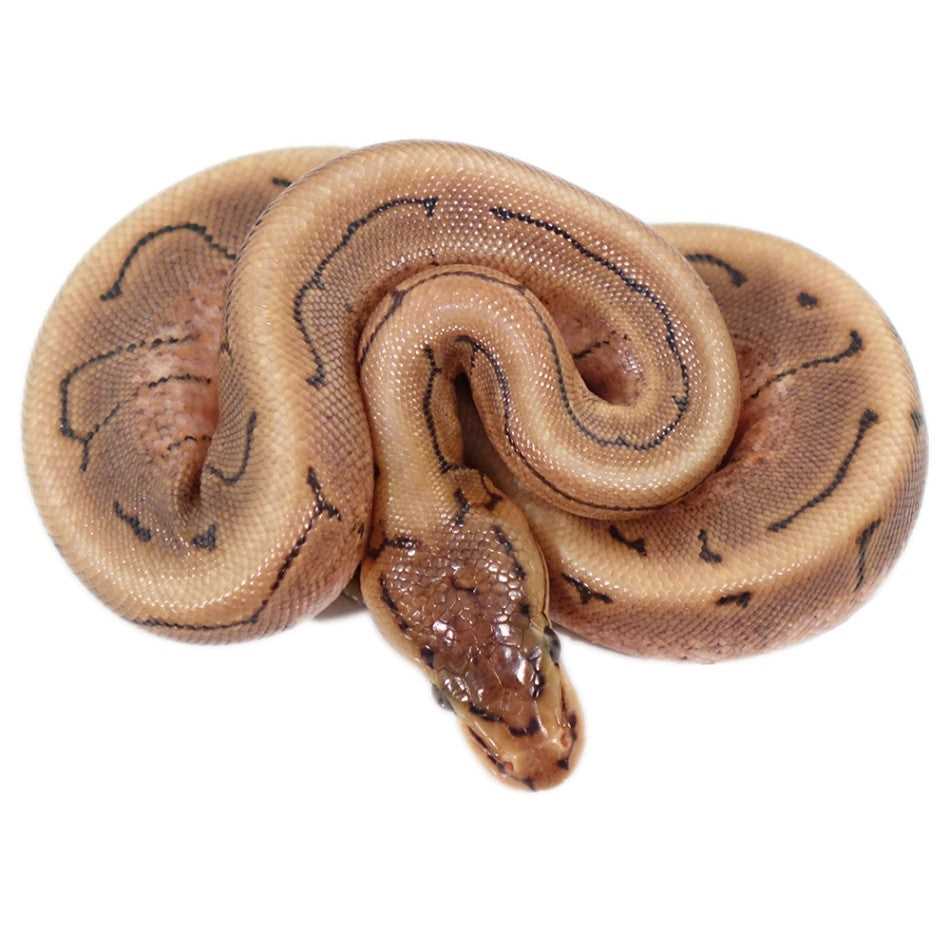Unique Characteristics of Spinner Ball Pythons
The Spinner Ball Python is a fascinating genetic morph of the popular pet reptile, the Ball Python (Python regius). It is known for its stunning appearance and unique pattern, which is the result of breeding two specific morphs: the Pastel and the Pinstripe Ball Pythons.
One of the most distinctive features of the Spinner Ball Python is its beautiful spinner pattern, which consists of bold, swirling lines that twist and turn along its body. This pattern, combined with its vibrant colors, makes the Spinner Ball Python a highly sought-after snake among reptile enthusiasts and collectors.
Another unique characteristic of the Spinner Ball Python is its genetic traits. When breeding two Spinner Ball Pythons together, there is a possibility of producing offspring with varying degrees of the spinner pattern. Some may have a more pronounced spinner pattern, while others may exhibit a more subtle variation.
Not only are Spinner Ball Pythons visually stunning, but they also have a delightful temperament. Like other Ball Pythons, Spinners are docile and easy to handle, making them a perfect pet snake for both beginners and experienced reptile owners.
In addition to their beautiful appearance and pleasant demeanor, Spinner Ball Pythons are relatively low-maintenance snakes. They thrive in temperatures ranging from 80 to 90 degrees Fahrenheit and require a humidity level of around 50 to 60 percent. Adequate housing and a suitable diet consisting of appropriately sized rodents ensure the overall health and well-being of these stunning reptiles.
Housing and Care Requirements for Spinner Ball Pythons

Enclosure Setup
Add a hide box or two to the enclosure, as ball pythons appreciate having a safe and cozy place to retreat to. These can be purchased commercially or created using objects such as a plastic container or a hollow log.
Lighting and heating are important factors to consider. Provide a temperature gradient ranging from 80-85°F (26-29°C) on the cool side of the enclosure to 85-90°F (29-32°C) on the warm side. This can be achieved using heat lamps or heat pads. A thermostat should be used to regulate the temperature and ensure it remains consistent.
Nutrition and Feeding
Offering a varied diet is essential for the health of the snake. It is recommended to provide frozen rodents that have been thawed and warmed to room temperature. Feed adult spinner ball pythons every 7-10 days, while hatchlings can be fed every 5-7 days.
General Care
Regular cleaning and maintenance of the enclosure is necessary to prevent the buildup of waste and bacteria. Spot clean the enclosure as needed and perform a complete substrate change every few months.
Provide a shallow water dish for the snake, ensuring that it is filled with fresh, clean water at all times. The humidity in the enclosure should be maintained between 50-60%. This can be achieved by misting the enclosure with water or using a humidity box.
Handling should be kept to a minimum, as ball pythons can become stressed by excessive handling. When handling is necessary, approach the snake calmly and support its body to avoid causing any harm or stress.
Feeding and Nutrition of Spinner Ball Pythons
Feeding and nutrition play a crucial role in the breeding, care, and overall health of spinner ball pythons. These beautiful reptiles require proper sustenance to thrive and reach their full genetic potential.
As with most pet snakes, spinner ball pythons are carnivores and primarily consume small rodents in the wild. When kept in captivity, it is essential to replicate their natural diet as closely as possible. The main food source for these pythons is mice and rats, which should be pre-killed or frozen-thawed before offering them to the snakes.
The size of the prey item should be appropriate for the size of the snake. Hatchlings and young spinner ball pythons can be fed with appropriately sized mice, while adult pythons may require larger rats. It is essential to avoid feeding the pythons with prey items that are too large, as this can lead to regurgitation, digestive issues, or even injury.
Feeding frequency can vary depending on the age and size of the snake. Young spinner ball pythons should be fed every 5-7 days, while adults may only require a meal every 1-2 weeks. It is crucial to observe the snake’s body condition and adjust the feeding frequency accordingly to maintain a healthy weight.
When offering prey items to the snakes, it is crucial to use tongs or feeding tweezers to prevent accidental bites. This not only protects the owner but also reduces stress for the snake during feeding time.
Along with a proper diet, freshwater should be provided at all times in a shallow dish that is easily accessible to the snake. The water dish should be cleaned and refilled regularly to maintain cleanliness.
Health and Diseases of Spinner Ball Pythons

One of the most important aspects of maintaining the health of your spinner ball python is to provide the appropriate habitat and care. This includes providing a proper enclosure with suitable temperature and humidity levels. Failure to meet these requirements can result in stress, respiratory infections, and other health issues.
Regular veterinary check-ups are also essential for monitoring the health of your spinner ball python. A reptile veterinarian can perform a thorough examination and provide guidance on proper nutrition, habitat maintenance, and preventive care measures. Additionally, they can conduct diagnostic tests to identify any underlying health conditions and provide treatment if necessary.
Parasites are another concern in spinner ball pythons, including external parasites such as mites and ticks, as well as internal parasites like worms. Regular monitoring and appropriate treatment can help prevent and address these issues. Your veterinarian can recommend an appropriate deworming schedule and provide guidance on parasite prevention.
Overall, proper care, regular veterinary check-ups, and monitoring for signs of health issues are essential to maintaining the well-being of your spinner ball python. By providing a suitable habitat, nutrition, and preventive care, you can enjoy a healthy and thriving pet for many years to come.
Breeding Spinner Ball Pythons
The breeding process for spinner ball pythons involves several key steps. First, make sure to create a suitable breeding environment for the snakes. This can be achieved by providing them with a spacious enclosure that includes hiding spots and a temperature gradient. Maintaining proper humidity levels is also crucial.
Once the female is ready to lay her eggs, she will seek out a suitable nesting spot within her enclosure. It’s vital to provide her with a proper nesting box filled with moist substrate to simulate a natural nesting environment. The female will lay her eggs and then cover them to protect them throughout the incubation period.
After the eggs are laid, they will need to be carefully removed and placed into an incubator set at the appropriate temperature and humidity levels. The incubation process usually takes around 50 to 70 days, during which the eggs will develop and eventually hatch.
Once the baby spinner ball pythons have hatched, it’s crucial to provide them with the proper care and feeding. They should be housed in small, secure enclosures and fed appropriately sized prey items. Over time, they will grow and develop into beautiful adult spinner ball pythons.

I’m Lena Adams—a product of an unconventional upbringing in the African wilderness. My father, a daring explorer of African wildlife, sparked my fascination with reptiles, a passion that intertwined with the tragic loss of my mother during an expedition, leaving an indelible mark on my life. Driven to understand the creatures that captivated my parents, I embarked on my journey, sharing insights about reptiles, frogs, and lizards on my website. Through my explorations and conservation efforts, I honour my family’s legacy while seeking connections—to the creatures, nature, and the mother whose presence I yearn to understand.
